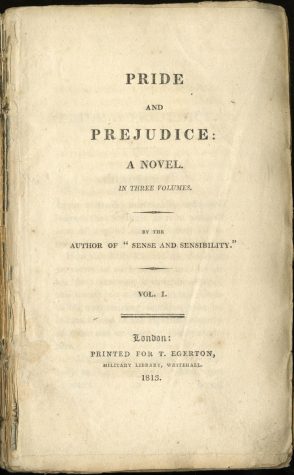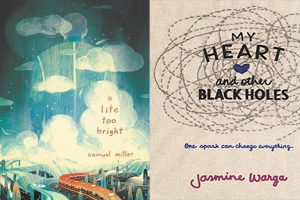March is Reading Month: Classics unite generations of readers
This is part one of a four-part series
While the debate of what makes a book a classic is still strong today, there is one thing nearly everyone can agree with — classics are important.
Books like “To Kill a Mockingbird” and “The Great Gatsby” have been regarded as classics for decades, earning them a spot on many must-read lists and English curricula.
The most common theme within all classic novels is their ability to relate to every generation of readers. This also contributes to the genre’s placement in classes across the globe.
People read books to feel something. Being able to care about a story’s characters, plot, and overall theme creates a feeling that can stay with a reader forever.
When a novel can make you, your mother, and your grandmother get something out of it, it may be considered a classic.
“The Catcher in the Rye” by J.D. Salinger

This novel has become a controversial staple in English curricula for decades.
Its sensitive subject matter and concentration on teen rebellion has made it one of the most censored books in American classrooms — when it’s read at all.
“The Catcher in the Rye” is still read at KHS.
Junior Delanie Schreiber thinks the novel, written by J. D. Salinger, is relevant to one of today’s most critical issues — mental health.
“It’s a very good book because it discusses what can happen if someone pushes their mental health to the side and bottles up their problems,” Schreiber said.
“It opens up this very needed discussion because even nowadays mental health is not a common topic during school, and many kids think that school should come before health.”
The novel follows teenager Holden Caulfield as he explores New York City following his expulsion from Pencey Preparatory Academy.
Caulfield works through depression and adolescent confusion as he wanders the streets of the Big Apple. His encounters with eccentric personalities and classic East Coast scenery make the novel a memorable one.
Schreiber encourages everyone to read the novel.
“It is a very important and good read,” Schreiber said. “Unlike most classic novels, the wording is comprehensible and interesting.”
“Pride and Prejudice” by Jane Austen

This 1813 Jane Austen novel tells the tale of the Bennet family.
In a time where financial need trumped love in terms of marriage, the Bennet daughters struggle to find a man to marry.
While the women want to follow their hearts, they also want to find a husband who will support their family.
Junior Olivia Duehring enjoys the novel because of its emotional build and gradual plot.
“I like the book because of how it really shows an emotional development throughout the whole book instead of just all at once like some books,” Duehring said.
“Pride and Prejudice” is not only a classic but a romance as well.
Austen is known for her romantic style and attention to detail when writing about elite status and social standing of the 18th century.
By the end of the novel, protagonist Elizabeth Bennet has defied the odds and chosen her heart over her head.
Her love with Mr. Darcy has spanned the test of time, and the couple is one of the most beloved in English literature.
Duehring thinks students could benefit from having the novel included in English classes.
“Yes (the novel should be in the English curriculum) because of how, in my experience, not many people at Kearsley can find a romantic classic novel that speaks to them the way this book can,” Duehring said.
Other Classics:
- “Wuthering Heights” by Emily Brontë
- “A Tale of Two Cities” by Charles Dickens
- “Little Women” by Louis May Alcott
- “Animal Farm” by George Orwell

Birthday: Aug. 2, 2001
Hobbies/Interests: NHS, drama club, Freshman Mentors.
Favorite Quote: "Find out who you are and do it on purpose."...






